
When fried just right, breaded okra transforms from slimy pods to tender, crisp morsels. A staple Southern food, fried okra often receives a light coat of cornmeal before frying in oil. But you can incorporate flour into the recipe as well. Wash the okra and cut it into bite-size pieces, if desired, before breading it or dipping it in batter.
Choose a Flour or Flour Blend
All-purpose flour, which is a wheat flour, is perfectly acceptable for frying okra. Some cooks favor self-rising flour, which is a blend of all-purpose flour, baking powder and salt. The baking powder causes the breading to rise, creating a lighter, puffier crust. Corn flour yields a crisper surface than wheat flours, and rice flour absorbs less oil. You can blend two flours or use one exclusively. Many commercial frying mixes contain a mixture of flour and cornmeal. Season the flour or flour blend to taste with salt and pepper. Add other seasonings, such as cayenne pepper or garlic powder, if desired.
Prepare Dry Flour Breading
If you dredge the freshly washed okra in plain flour, it absorbs the excess moisture, making it easier for the breading to bind to the okra. This initial flour layer is optional, but many cooks find it beneficial. Dip the floured or unfloured okra in milk, buttermilk or an egg wash before coating it in dry breading. You can freeze okra after you bread it in dry flour if you haven't dipped it in milk or egg.
Prepare a Flour Batter
Batter generates a more even and consistent crust than dry breading. To prepare a batter, mix equal parts flour and liquid -- milk or buttermilk -- to make a batter. Though you can vary the thickness of the batter according to your preference, aim for something slightly thinner than pancake batter. Season the batter with hot sauce, if desired. Dip freshly washed okra in the batter, then transfer it immediately to preheated oil.
Deep-Frying Flour-Coated Okra
Vegetable oil, canola oil and peanut oil are common choices for frying okra; many cooks favor vegetable shortening. Use a deep pan with a heavy bottom to prevent spills and minimize splattering. Extra-deep skillets and Dutch ovens made of cast-iron are ideal due to their size and ability to sustain heat. To minimize the risk of excessive or dangerous splattering, do not fill a pan more than halfway with oil. Throughout cooking, monitor the temperature of the oil with a deep-fat frying thermometer or candy thermometer. The oil should be between 350 and 375 degrees Fahrenheit when you put the okra in the pan. Fry a single layer of okra at a time. It’s tempting to pile all of the okra in the pan. But stirring the okra causes the crust to fall off, and overcrowded pieces never cook as evenly as single-layer batches. Skim breading debris out of the pan between batches to prevent scorching, uneven cooking and grease fires.
Fry Safely
Grease fires are unlikely if you follow safety guidelines, but you should be prepared to handle one, especially since flour is combustible. Don’t attempt to smother a grease fire with flour. Flour will ignite a larger fire. Don't pour water on a grease fire or use a water-based fire extinguisher. Water just spreads flaming oil. Smother a grease fire with baking soda or use a fire extinguisher that contains dry chemicals. If the fire is small and confined to the pan, put a lid on the pan to smother the flames.
Related Articles

Does Cornstarch Make Fried Chicken ...

How to Bread Chicken With Flour & Eggs ...

How to Cook Fried Drummettes
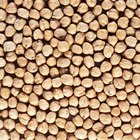
How to Roast Chickpea Flour

Can You Deep-Fry Frozen Uncooked Shrimp?

Recipes for Enameled Cast Iron Cookery
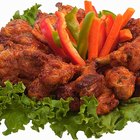
How to Cook Fried Drumettes

What Can I Substitute for Cake Flour to ...

Deep-Frying Using All-Purpose Flour
Frying Shrimp in a Light Batter or Flour
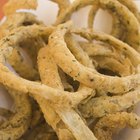
How to Deep Fry Vegetables With Batters

Can You Bread Chicken Wings With Egg ...

How to Fry Shrimp With Potato Starch
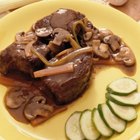
How to Use Leftover Marinade in Gravy
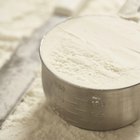
How to Tenderize Meat With Flour
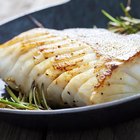
How Do I Pan Fry Fresh Fish With a ...
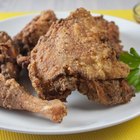
How to Make Good, Crispy Fried Chicken

How to Cook Okra in the Microwave
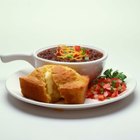
How to Make Cornbread in a Cast-Iron ...
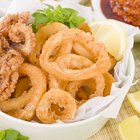
How to Marinate & Fry Squid
References
Writer Bio
Lamar Grey has been writing about cooking and food culture since 2010. He has ghostwritten eight cookbooks. Grey entered the culinary industry in 2003 as a prep cook in a full-service restaurant. He subsequently served as a baker and head cook on three award-winning kitchen staffs.
Photo Credits
Stockbyte/Stockbyte/Getty Images